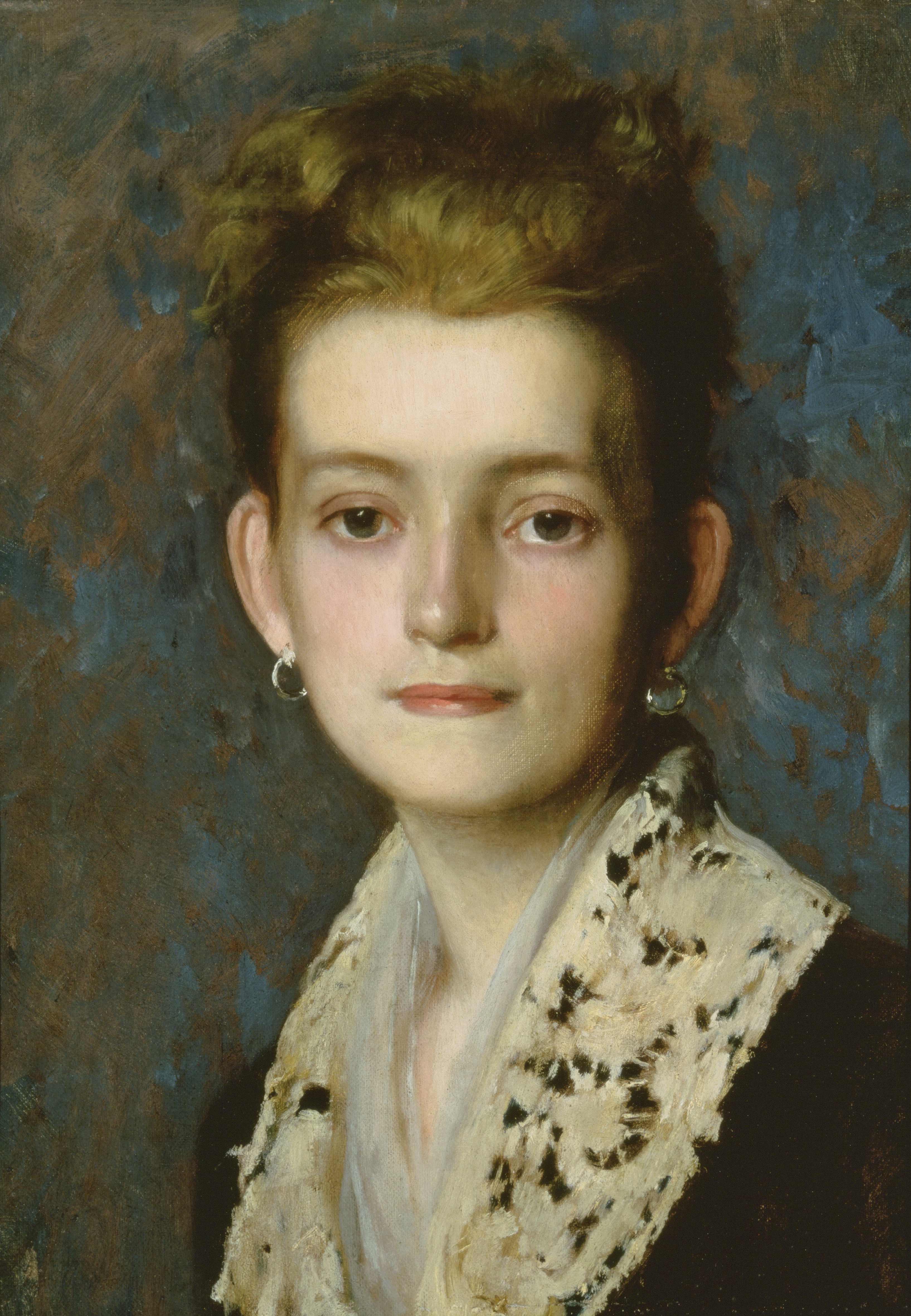Frank Duveneck
(Covington, Kentucky, 1848 - 1919, Cincinnati, Ohio)
Miss Molly Duveneck
c. 1888 - 1890
Oil on fabric
16 1/4 x 11 5/8 in. (41.4 x 29.5 cm)
Collection of the Akron Art Museum
Bequest of Edwin C. Shaw
1955.26
More Information
Duveneck’s younger sister Molly, a free-spirited woman, caused a scandal by having an affair with an older married man in conservative 1890s Cincinnati. Duveneck’s refined brushwork, evident in Molly’s silky hair, translucent skin and delicate lace and chiffon collars, is balanced by the young woman’s open expression and direct gaze.
Keywords
FemaleOhio Art
Head
Face
Earrings
Ohio
Clothing
Costume
Lace work
Portrait
Painting
Hair
Dress

